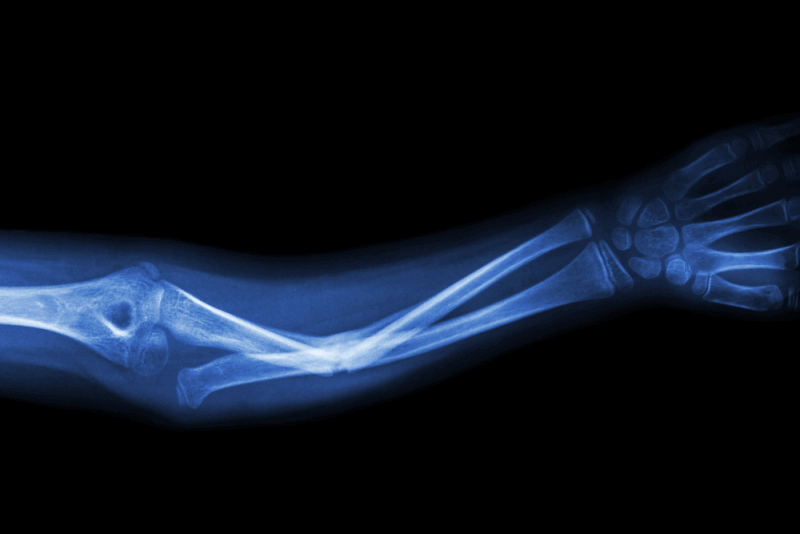30 Second Summary
- A stress fracture is damage to the bones due to overuse.
- Stress fractures are usually seen in athletes and people whose occupations require them to repeat the same movement over and over again.
- Symptoms of a stress fracture include pain, swelling and redness.
- Stress fracture treatment includes rest, cold compresses, medication and the use of appropriate equipment.
What is a Stress Fracture?
Stress fracture can be defined as a reaction of the body as a result of continuous and excessive use of an area of the body. Muscle groups that work without rest cannot absorb the physical stress after a while. As a result, they transfer stress to the bones and fractures or cracks occur. Stress fractures are most common in the bones of the lower extremities. This is because the lower extremity is under more stress as it carries the body's load. It is usually seen in athletes and people whose profession requires them to repeat the same movement over and over again.
Stress fractures account for 20% of sports injuries. Stress fractures are more common in athletes interested in tennis, gymnastics, athletics and basketball. In addition to jeopardizing health, it can also damage a sports career if not treated correctly. For this reason, the treatment of stress fractures and the measures taken are extremely necessary and important. Statistics show that stress fractures are more common in women than in men. Researchers attribute this to the higher prevalence of bulimia nervosa, anorexia nervosa, amenorrhea and osteoporosis in women. Stress fractures, which are directly related to bone mass, occur more frequently in people with low bone mass.
Stress Fracture Diagnosis Methods
In order to make the correct diagnosis of stress fracture, a detailed anamnesis is first taken from the patient. The severity of the pain, its location, how long and how often it has been felt should be accurately and clearly described to the physician. After anamnesis, a physical examination is performed. Changes in the skin such as swelling, redness and temperature are observed by physical examination. Depending on the situation, some physical examination tests may be performed. After these two steps, radiological imaging methods are used for definitive diagnosis. Radiological examination methods used in the diagnosis of stress fracture are as follows:
- X-ray: Images of bones are obtained using X-rays. However, early stress fractures may not be visualized on x-rays.
- MRI Scans: Magnetic fields and radio waves are used to visualize bones, tissues and muscles. It can visualize early stress fractures that are not visible on X-rays. It is the most commonly used method in the diagnosis of stress fracture.
- Bone Scans Parts of the body such as the thorax are difficult to visualize on MRI scans. Bone scans can be used to visualize these areas.
- CT Scans CT scans can be used if there is a barrier to being in the magnetic field, such as a pacemaker.
Causes of Stress Fracture
Stress fractures are often caused by overuse. Putting too much pressure on the bone and muscle and not allowing time for healing increases the risk of stress fractures. Stress fractures develop gradually as a result of prolonged repetition of the same movement. The most common causes are:
- Exercising and training too often without proper and adequate rest.
- Increasing the intensity and difficulty of exercise rapidly or suddenly.
- Untrained and unconscious sports and training.
- Suddenly changing the exercised surface. A sudden change in the level of stress placed on the muscles by a change in the stiffness of the tissue.
- Exercising without using the right equipment.
- Specializing in a sport without enough practice.
There are some conditions that increase the risk of suffering a stress fracture. People with this condition need to be more careful in their movement and exercise. These factors are:
- Osteoporosis
- Hallux Valgus
- Flat feet
- Vitamin D deficiency
- Obesity disease
- Eating disorders
- Pes Cavus
- Previously experienced stress fractures
- Calcium deficiency
- Irregular menstrual cycle in women
- Engaging in sports such as athletics, basketball, tennis, gymnastics and dance
Symptoms of Stress Fracture
Stress fracture symptoms do not appear suddenly. The pain, which starts vaguely in the early period, increases over time. Symptoms increase as the degree of fracture increases. The most common symptoms of a stress fracture are:
- Pain that starts during physical activities and exercises and increases over time
- Pain that does not subside after exercise
- Pain felt during rest
- Tenderness in the tissue around the bone
- Swelling around the bone
- Bruising or reddening of the tissue
- Crepitis in severe fractures
- Feeling restricted in movements and unable to perform some movements
- Failure to respond to physical therapy tests
Stress Fracture Treatment Methods
The treatment of a stress fracture is individualized and condition-specific. A treatment program is prepared taking into account the degree of the fracture, which bone it is in and the patient's health status. The following methods are used to treat stress fractures:
- Rest: The most important step in treatment. The broken bone's inability to function is essential for healing.
- Cold compress: It is applied to prevent swelling and bruising of the tissue around the bone.
- Medication Painkillers make treatment easier for the patient. In addition, medications and supplements that support bone cell production also enhance treatment.
- Stabilization: Materials such as plaster are used to stabilize the bone for proper fusion.
- Surgery Preferred in severe and dangerous fractures. Correct fusion is ensured with the help of screws.
In addition to these methods, appropriate equipment can be used to treat stress fractures. Crutches for lower extremity fractures and arm slings for upper extremity fractures are examples of such equipment. Proper and adequate nutrition plays a major role in the treatment of fractures. Bone formation should be supported by appropriate nutrients. Mental health also plays an important role in stress fracture treatment. Good psychological well-being accelerates the healing process of the fracture and it is important that the patient does not withdraw during and after treatment.
Stress Fracture Exercise
If the treatment of stress fractures is supported by exercises, the treatment progresses faster and becomes permanent. Exercises used in the treatment of stress fractures include the following:
- Water exercise Exercises in water, such as swimming, running in deep water and knee extension, play a positive role in the treatment of fractures.
- Seated resistance exercise: Sitting exercises with the help of some equipment that apply gradually increased resistance to broken bones.
- Cycling exercise: Using a stationary bicycle in a controlled manner is particularly useful for lower limb stress fractures.
- Weight-bearing exercise: Exercises that are generally preferred for upper limb fractures are performed by lifting weights without straining the fracture.
It is very important to perform stress fracture exercises in a controlled manner and to get guidance from a specialist during the exercise. Otherwise, instead of being beneficial, these exercises may strain the fracture and negatively affect the treatment.











